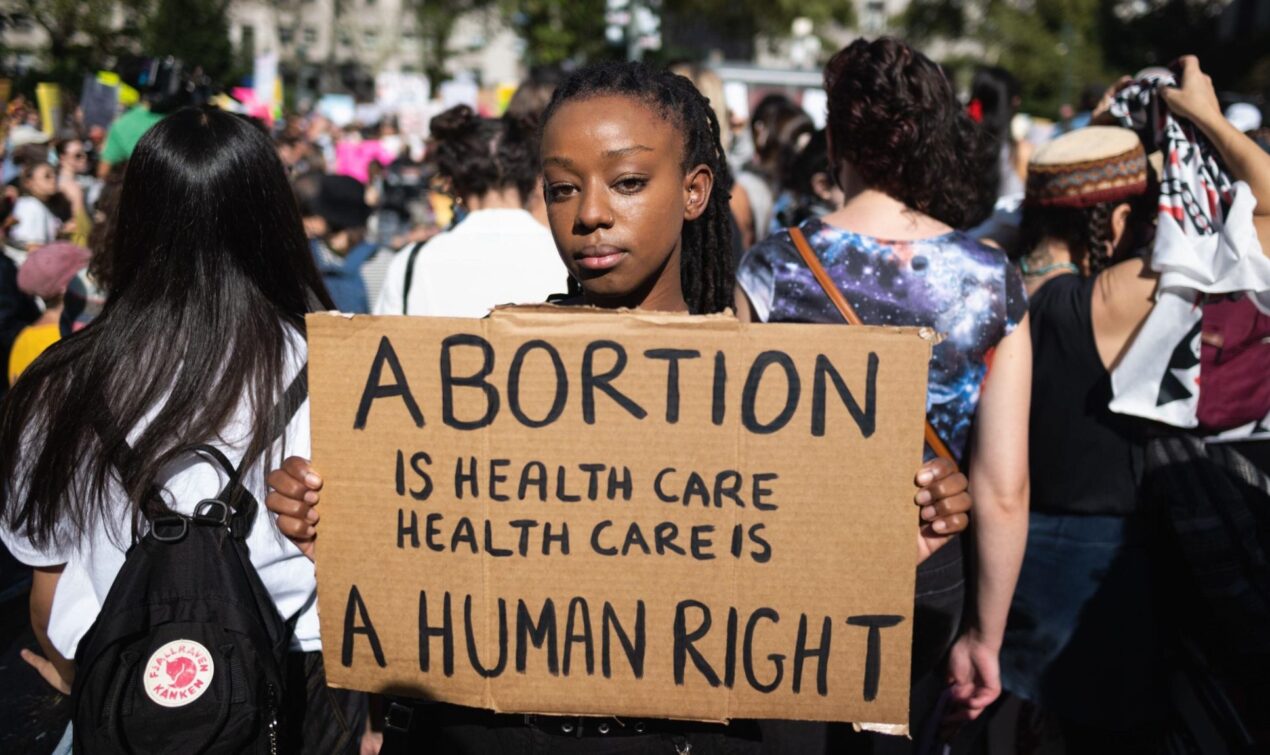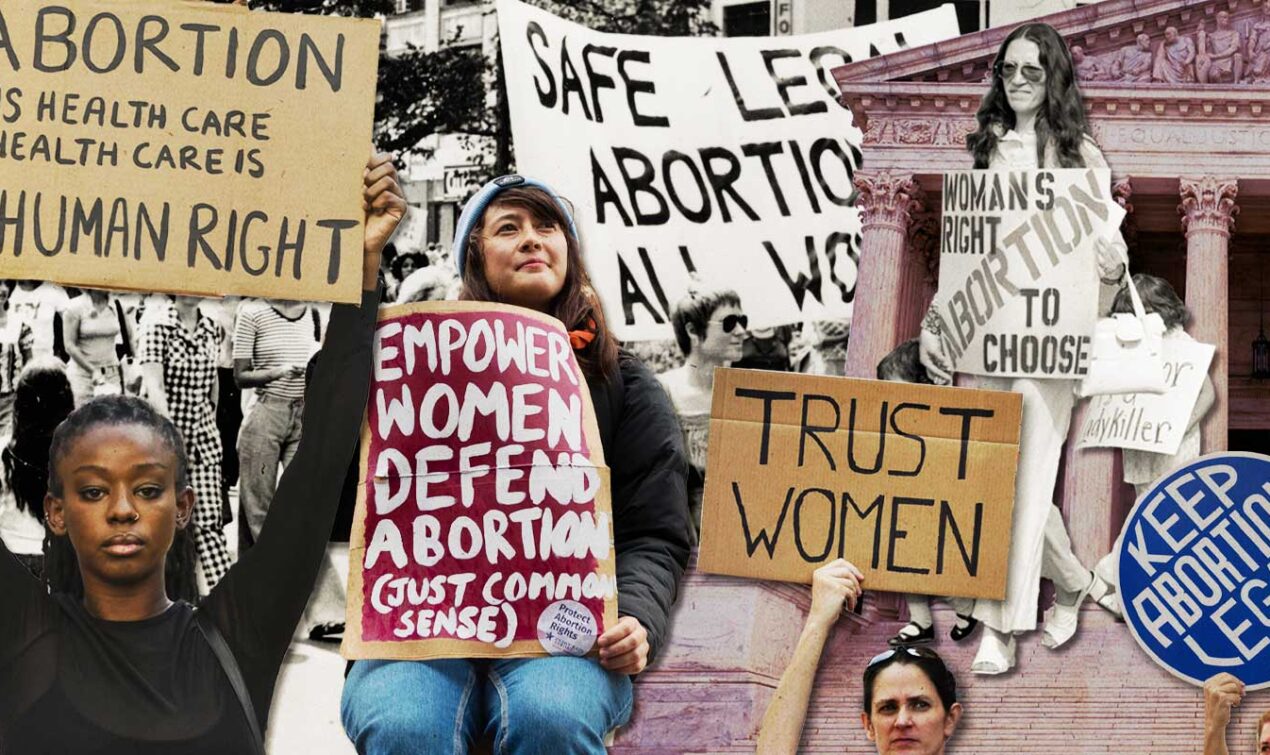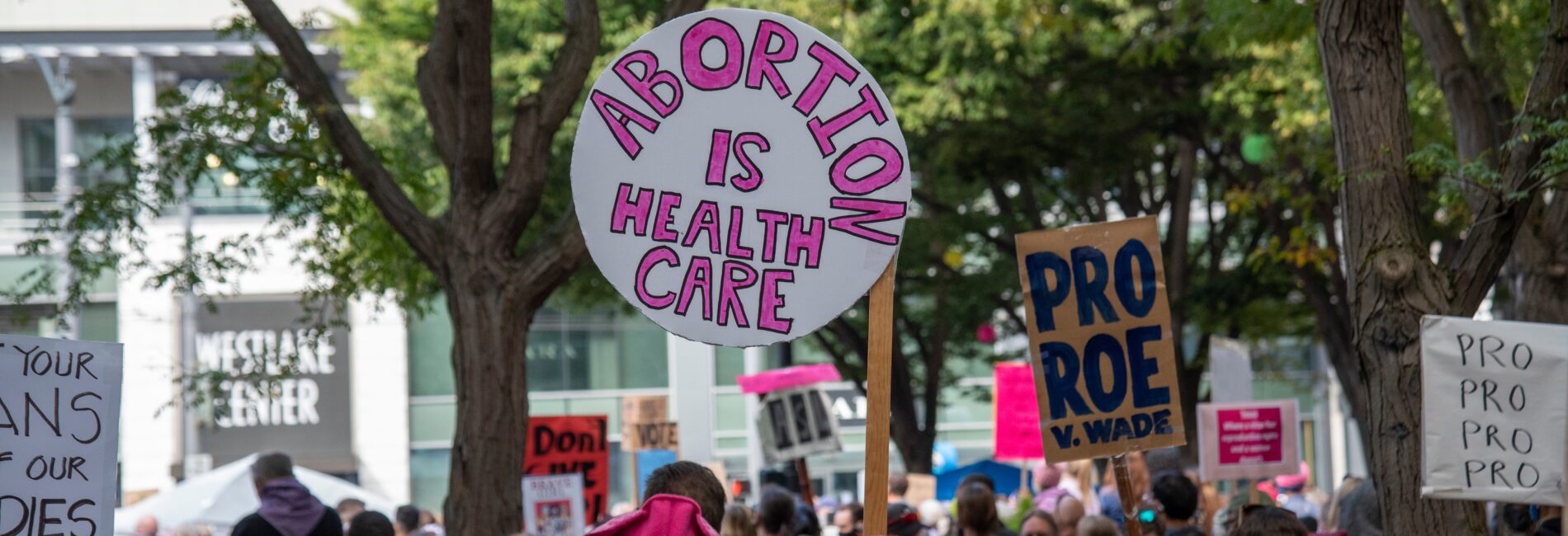In a world where myth becomes perception, it’s time to clear the air and get down to what really happens when a woman or girl is denied an abortion
THE TURNAWAY STUDY
Over 95% of participants reported that having an abortion was the right decision for them.
There is no evidence of mental health harm from having an abortion, instead, being denied a wanted abortion is associated with increased anxiety and lower self esteem.
Being forced to carry a pregnancy to term results in major physical health harms. Those who gave birth were more than 5X more likely to experience potentially life-threatening health conditions.
Dr. Diana Greene Foster is a faculty member, professor, and demographer that has spent the past ten years putting together the Turnaway Study with her research team at University of California, San Francisco. The study is the first-of-its-kind scientific, data-driven study that definitively answers the question: what happens when a woman or girl wants an abortion and is denied one? Dr. Diana Greene Foster followed 1,000 women from across the country over ten years. This is the first definitive scientific study that shows—in factual data—the consequences women face when either having or being denied an abortion.
The Turnaway Project is a reproductive freedom/abortion rights campaign and student movement.
The Turnaway Study, published in 2020, has had a profound impact on the narrative surrounding abortion and reproductive rights. The study was released prior to the overturning of Roe vs Wade. The Supreme Court case, Dobbs vs Jackson Women’s Health Organization overturned Roe in 2022, criminalizing abortion by making it an unprotected right. The landmark ruling gave power to the states to pass dangerous laws banning abortion and putting women’s lives in danger.
The Turnaway Study compared patients who received abortions with those who were turned away at similar points in their pregnancy. Study participants were interviewed every six months about their mental and physical health, education attainment, employment, economic situation, social support, and relationships. The main findings of The Turnaway Study is that women who are turned away from getting their abortions endure far more negative and damaging life consequences than those who are able to exercise bodily autonomy.

Abortion is on the ballot in several states this election.
As of May, 2024, 14 states have restrictive bans on abortion despite knowing that when abortion is made accessible, it is a safe and common medical procedure. Since the overturning of Roe v. Wade, our country’s abortion access crisis has worsened. Limiting or criminalizing access to abortion impacts one in four women in the U.S., yet due to stigma, people who have abortions don’t share their experiences, even with those closest to them. By not having real discussions about abortion, it leaves many to get their information from biased media sources and political talking heads, further adding to an already dangerous national abortion access crisis.
The time to act is NOW. Through attempts to criminalize and deny women the right to body autonomy, the Turnaway Project aims to activate communities to #vote to expand and protect reproductive rights, as well as engage in candid discussions about abortion through community-led readings of the Turnaway Play.
Based on the groundbreaking Turnaway Study, Dr. Diana Greene Foster’s sister and playwright, Lesley Greene, created the Turnaway Play. The play features real-life stories of women who were denied abortions across the United States. Through humor, honesty, and compassion, this clever play aims to reduce stigma, normalize, humanize, and open a dialogue that affects over half of the population.
With recent performances at the SoHo House in New York City and The Loft Ensemble Theatre in North Hollywood, student activists and reproductive organizations across the country are coming together to ensure the Turnaway Play is performed in every state. This is the time to amplify the voices of future generations so that every person has reproductive freedoms.
The Turnaway Play gives voice to an incredibly important group of women. The courage to share their stories empowers both existing and future generations to come. Hosting a reading of The Turnaway Play brings the science and the stories to a broader audience; reduces abortion stigma; and sparks essential conversation. You can learn more about Dr. Foster and her role at Advancing New Standards for Reproductive Health (ANSIRH), watch her popular 2024 TED Talk, or read her book The Turnaway Study: Ten Years a Thousand Women and the Consequences of Having of Being Denied an Abortion.
According to the Center for Reproductive Rights, it states that, “since the U.S. Supreme Court overturned eliminated the constitutional right to abortion in 2022, voters have come out strongly in support of reproductive freedom. Abortion-related measures have succeeded every time they’ve appeared on the ballot thus far, with voters rejecting attempts by extremist politicians to interfere with their personal health care decisions.
On November 5, 2024, voters will have a chance to weigh in on abortion rights in 10 more states. In some of those states, abortion is now banned or highly restricted and amendments could be a basis for challenging those limitations. In other states where abortion is still legal, amendments will prevent the threat of future interference by state or local governments. “
This Presidential election is historic for many reasons, but perhaps the most prominent is the rights that are at stake.
A Brief History of Pivotal Moments in Time for Women
Before the 1850s- Abortion is common, publicly advertised in newspapers and performed by midwives and lay people
1847 – American Medical Association is formed. AMA then advocates for criminalizing abortion and female abortion providers, leading to legislation to ban abortion.
1880 – Every state has laws to restrict abortion with the exception of the safety of the life of the mother.
1910 – Every state made abortion at any stage of pregnancy illegal and only doctors could decide to save the patient’s life. At that time 95% of doctors were male.
1930 – There are many fatalities as a result of the lack of abortion care access.
Unsafe, illegal abortion was the cause of death for nearly 2,700 women accounting for 18% of maternal mortality rates that year. (Guttmacher Institute)
1939 – In desperation, some women use knitting needles or coat hangers into their vaginas and uteruses, douched with solutions such as lye, or ingested strong drugs or chemicals.
1955 – A Conference on Abortion Legalization spearheaded by Planned Parenthood is held. The purpose of the conference is to rewrite laws that pertain to abortion in an effort to initiate safe abortion practices and abortion access.
1960s -The introduction of a drug called thalidomide made to ease pregnancy symptoms, only it caused severe birth defects.
1962 – The thalidomide fallout brought greater support for abortion law reform.
1963 – Second Wave Feminism, Civil Rights Movement, release of The Feminine Mystique, the Equal Pay Act is signed into law by JFK, Jr.
1964 – Association for the Study of Abortion (ASA) is formed. In a strategic move to incrementally increase abortion access, the ASA advocates for “medically necessary” abortions only, leading to other members of the larger abortion law reform movement who wanted a full repeal to legalize abortion for all people.
1966 – Nine California doctors known as the San Francisco Nine are sued for performing abortions on women exposed to rubella. This was one of the first abortion reform measures in the United States. California amended its prohibition on abortion to allow hospital committees to approve requests for abortion.
1967 – Supreme Court decision, Loving v. Virginia, decreed that all state anti- miscegenation laws (laws that prohibit interracial marriage) unconstitutional.This ruling incorporated fundamental rights that were challenged based on racism.
1967-1973 Alaska, Hawaii, New York, and Washington repealed their abortion bans entirely, while 13 others enacted reforms that expanded exceptions.
1969 – NARAL, The National Association for the Repeal of Abortion Laws is the first national group created solely to campaign for the legalization of abortion.
1969-1973 The Jane Collective or Jane, officially known as the Abortion Counseling Service of Women’s Liberation, an underground service in Chicago, Illinois affiliated with the Chicago Women’s Liberation Union operated from 1969 to 1973, a time when abortion was illegal in most of the United States.
1970 – Abortion is officially legal in New York.
1973 – Passing of Roe vs. Wade the U.S. Supreme Court ruled that the due process clause of the 14th Amendment to the Constitution protects the right to abortion. Roe v. Wade protected the right to abortion in all 50 states, making abortion services safer and more accessible throughout the country.
1976 – The Hyde Amendment is put into effect. It is a discriminatory and racist policy that prevents federal dollars from being used in government insurance programs like Medicaid for abortion services (except in instances of incest, rape, or life-threatening risk to the pregnant person).
1984 – Global Gag Rule was introduced in the Mexico City policy by President Ronald Reagan, otherwise known as the global gag rule, in 1984. The global gag rule prevents foreign organizations that receive U.S. health aid from providing information on and referrals for abortions or advocating for abortion access.
1992 – Planned Parenthood of Southeastern Pennsylvania v. Casey
This landmark case reaffirmed that the Constitution protects the right to abortion
2007 – The Supreme Court upheld the first federal legislation to criminalize abortion, allowing Congress to ban certain second-trimester abortion procedures — which are sometimes the safest and best way to protect a patient’s health.
2016 – National Women’s March. A march to save reproductive rights. Texas gets the spotlight as the Supreme Court ruled that two Texas abortion restrictions were unconstitutional because they would shut down most abortion providers in the state and impose an “undue burden” on access to safe, legal abortion in Texas.
2020 – June Medical Services vs. Russo, an attempt to make any/all abortion illegal in Louisiana. This was the final time Ruth Bader Ginsberg would rule on abortion rights before her death.
2020 – Dr. Diana Greene -Foster leads a team of 11 researchers to launch the first-of-its-kind scientific study in the United States on what happens when women who want an abortion are denied one. This is the national release of The Turnaway Study.
2021 – Texas Six-Week Ban and the AMA denounced the Texas abortion ban, but the Supreme Court allowed it to take effect.
2022 – Roe v. Wade is overturned in a historic ruling by the newly appointed Supreme Court that consists of multiple conservative pro-life justices. The film, The Jane’s, based on the Abortion Counseling Service of Women’s Liberation in the 70s, is released.
Being denied an abortion reduces women and children’s financial security and safety.
Women denied an abortion had almost 4 times greater odds of a household income below the federal poverty level and 3 times greater odds of being unemployed.
There was an increased likelihood that women didn’t have enough money to pay for basic family necessities like food, housing and transportation if they were denied an abortion.
Women unable to terminate unwanted pregnancies were more likely to stay in contact with violent partners, putting them and their children at greater risk than if they had received the abortion.
Continuing an unwanted pregnancy and giving birth is associated with more serious health problems than abortion.
The most important message of this book, when considering the role the government should play in reproductive choices, is that people are able to make good decisions about their bodies, their childbearing, and their lives.
Dr. Diana Greene Foster

These states will have constitutional amendments on their ballots this year that protect abortion in some way:
- Arizona: The voter-initiated Proposition 139, the Arizona Abortion Access Act, would amend the state constitution to create a “fundamental right” to receive abortion care up until fetal viability, with exceptions after that if a health care professional decides it’s needed to “protect the life or physical or mental health of the pregnant individual.”
- Colorado: The citizen-led Colorado Right to Abortion and Health Insurance Coverage Initiative, would create a constitutional right to abortion and remove the state’s public funding ban.
- Florida: The state’s citizen-led ballot initiative, the Amendment to Limit Government Interference with Abortion, would create a constitutional amendment to protect Floridians’ freedom to access abortion.
- Maryland: Maryland voters will have the opportunity to cast their ballot on the Reproductive Freedom referendum, which would amend the state’s constitution to ensure that everyone has the fundamental right to reproductive freedom, including the right to abortion access and birth control.
- Missouri: Abortion is currently banned in Missouri, but voters have the chance to remove that ban with Amendment 3, the Missouri Right to Reproductive Freedom. The voter-initiated measure would amend the state constitution to make abortion and other reproductive health care a fundamental right.
- Montana: Montana’s voter-initiated Right to Abortion Initiative, CI-128, would amend the state constitution to enshrine the “right to make and carry out decisions about one’s own pregnancy, including the right to abortion.”
- Nebraska: The citizen-led Nebraska Right to Abortion Initiative would enshrine in the state constitution the right to have an abortion until viability or later to protect the health of the pregnant woman. A conflicting proposal would bar abortions in the second and third trimesters, with exceptions for medical emergency, sexual assault and incest.
- Nevada: Nevada Question 6, the Right to Abortion Initiative, would amend the state constitution to provide the right to an abortion. The voter-initiated measure would allow the state to regulate abortion after fetal viability, except where medically indicated to “protect the life or health of the pregnant patient.”
- New York: Proposition 1, the New York State Equal Rights Amendment, would add protections for people who experience discrimination and explicitly prohibit discrimination by the government based on pregnancy and pregnancy outcomes. It would also protect against any government actions that would curtail a person’s reproductive autonomy or their access to reproductive health care.
- South Dakota: Abortion is currently illegal in South Dakota, but its citizens are seeking to change that with the South Dakota Freedom Amendment. The voter-initiated measure would “restore protections of Roe v. Wade” and establish a right to abortion before 12 weeks of pregnancy.













